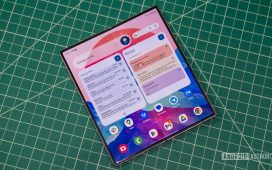The battle between Android and iPhone has always sparked passionate debates among tech enthusiasts. While both operating systems have unique strengths, the iPhone boasts several innovative features that Android users can only envy. What if the green robot finally borrowed these game-changing functionalities to level the playing field?
As a dedicated Android user who occasionally tests iPhones for review purposes, I’ve noticed how both ecosystems frequently “borrow” ideas from each other. While features like Gemini (Android’s answer to Siri) and casting capabilities exist on both platforms, some iPhone functionalities remain uniquely Apple. Let’s explore five iPhone features that would significantly enhance the Android experience if implemented soon.
Dynamic Island: notification innovation Android needs


Apple’s Dynamic Island represents one of the most creative solutions to the front camera cutout problem. Introduced with the iPhone 14 series, this interactive notification hub transforms what could have been dead screen space into something genuinely useful.
Unlike Android’s traditional notification system, Dynamic Island provides real-time information without duplicating alerts. Watching the animation expand to show live updates of delivery tracking, sports scores, or music playback creates a seamless experience that feels intentional rather than intrusive.
While Samsung has attempted to replicate this functionality with its “Now Bar” on Galaxy S25 devices, the implementation lacks Apple’s version’s polish and system-wide integration. Android needs a universal approach that works across all devices and provides the same level of interactive functionality.
Android’s Quick Share excels at transferring files between devices, but exchanging contact information remains surprisingly cumbersome. Apple’s NameDrop feature elegantly solves this problem by allowing iPhone users to share contact details simply by bringing devices close together.
This proximity-based sharing method instantly transfers phone numbers, email addresses, profile photos, and other contact details without navigating through multiple menus or apps. This streamlined approach saves valuable time and creates a more professional impression for networking events or business meetings.
Android’s implementation could improve Apple’s version by incorporating additional customization options for what information gets shared in different contexts. The ability to create different sharing profiles for professional versus personal encounters would make this feature even more valuable.
Lossless music streaming without internet dependency
Apple’s AirPlay 2 technology enables iPhone users to stream high-quality audio to compatible speakers and devices without sacrificing sound quality. This works even without an internet connection, most impressively, maintaining the full depth and detail of lossless audio files.
While Android’s Cast functionality offers similar capabilities for streaming content to other devices, it still requires an internet connection in most cases and doesn’t maintain the same audio quality standards. This limitation represents a significant drawback for audiophiles with premium headphones or speaker systems.
Android needs to develop a comparable wireless streaming protocol that prioritizes audio quality and works reliably across the diverse ecosystem of Android devices and compatible speakers. This would particularly benefit users of high-end Android phones who invest in quality audio equipment.
Privacy protection through email masking
Online privacy concerns continue to grow, making Apple’s Hide My Email feature increasingly valuable. This service generates random, unique email addresses for website signups, newsletter subscriptions, and app registrations while forwarding everything to your primary inbox.
The beauty of this system lies in its integration throughout the iOS experience—working seamlessly in Safari and across applications. A comparable feature would provide significant peace of mind for Android users concerned about data privacy and reducing spam.
Google could potentially integrate this functionality into Gmail or as part of Google One subscriptions, creating a comprehensive privacy solution that works across the entire Android ecosystem rather than being limited to specific manufacturer implementations.
Smart app management for better storage optimization
Storage management becomes increasingly important as apps grow larger and more complex. Apple’s Offload Unused Apps feature intelligently monitors application usage patterns and automatically removes rarely-used apps while preserving their data and settings.
The app icon remains visible on your home screen, allowing for quick reinstallation when needed. This approach balances storage efficiency with convenience in a way that feels seamless to the user experience.
While some Android devices offer similar archiving capabilities, the implementation varies widely between manufacturers and often requires manual intervention. A standardized, system-level solution within Android would ensure consistent experiences across all devices regardless of brand or price point.
These five iPhone features represent significant quality-of-life improvements that Android users deserve. By implementing thoughtful versions of these capabilities, Google could enhance the Android experience while maintaining the open flexibility that makes the platform unique. Perhaps with Android 15, some of these wishes might finally become reality.










